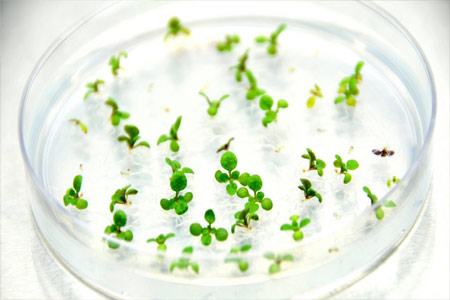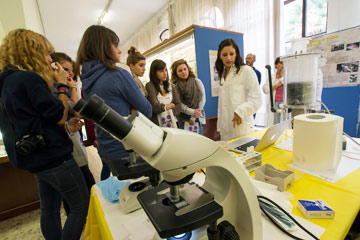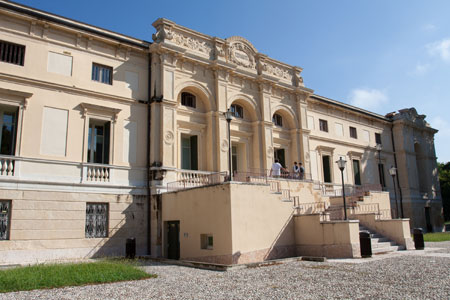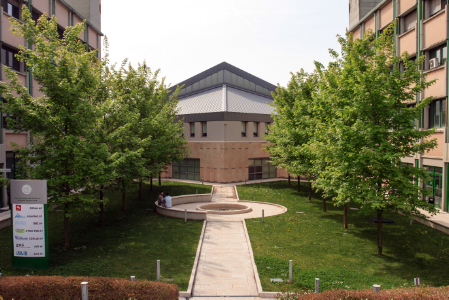Learning outcomes
The goal of the Structural Biology course for the degree in Bioinformatics and Medical Biotechnology is to develop in the student the skills necessary to critically read and assess scientific papers in this branch of science, specially in crystallography since NMR is covered by another course.
After an introduction discussing the relative weight of the different techniques used to determine the three-dimensional structure of biomolecules, the course concentrates on the theory and practice of macromolecular crystallography.
The fundamentals of the theory of diffraction, the modern methods of data collection and the phase problem are covered in detail. In addition, papers selected from the current literature dealing with important biological structures are read and discussed. The laboratory introduces the student to the basic experimental techniques of Biocrystallography, in particular those concerning the preparation of biological crystals. An alternative to the experimental laboratory is the preparation of a term paper dealing with a topic in Structural Biology.
Syllabus
Introduction. Structural Biology. The Protein Data Bank. Methods used to determine the three-dimensional structure of macromolecules. Crystallography, Nuclear Magnetic Resonance and Electron Microscopy. The role of Biocrystallography in Structural Biology.
The theory of X-ray diffraction. Geometry of an X-ray scattering experiment. Scattering of a single electron and an atom. The atomic scattering factor. Structure factor. The structure factor of atoms not located at the origin. The diffraction pattern of a one-dimensional array of atoms. X-ray diffraction from a three-dimensional array of atoms. The von Laue scattering conditions. The structure factor of a crystal. Fourier transforms. Convolutions and their use in the computation of structure factors. Bragg’s law of diffraction.
Properties of crystals. Symmetry. Symmetry elements. Space groups. Reciprocal lattice. Preparation of macromolecular crystals. Properties of protein crystals. The relationship between the crystal lattice and the reciprocal lattice. The Ewald sphere. Determination of the space group and of the number of molecules in the unit cell of a macromolecular crystal.
Determination of the molecular structure by X-ray crystallography. The phase problem. Steps in determining the structure of a macromolecule. X-ray sources. Data collection methods. Solving the phase problem. The method of multiple isomorphous replacement. The Patterson function. Treatment of errors. Computation of electron density maps. Molecular replacement. Other methods used to solve the phase problem.
Model building and refinement. Interpretation of the electron density maps. Building the model. Refinement methods. Assessing the model quality. The R factor. Ramachandran plots. Checking the stereochemistry.
Some important results of Biocrystallography. Using the Fourier difference synthesis to study the function of proteins. Conformational changes. Time resolved Biocrystallography. The importance of synchrotron radiation.
Recommended textbooks:
Results
1) Liljas, A, Liljas, L., Piskur, J., Lindblom, G., Nissen, P & Kjeldgaard, M. (2009) Textbook of Structural Biology. World Scientific Publishing Singapore.
2) Branden, C. & Tooze, J. (1999) Introduction to Protein Structure. Second Edition. Garland Publishing, Inc., New York.
Methods
1) Rupp, B. (2010) Biomolecular Crystallography. Principles, Practice and Application to Structural Biology. Garland Science New York.
2) Cantor, C. R. & Schimmel, P. R. (1980) Biophysical Chemistry Volume 2. W. H. Freeman and Company, San Francisco.
3) Giacovazzo, C. (Editor) (1992) Fundamentals of Crystallography. Oxford University Press, Oxford.
5) McPherson, A. (1999) Crystallization of Biological Macromolecules. Cold Spring Harbor Laboratory Press, Cold Spring Harbor, New York







